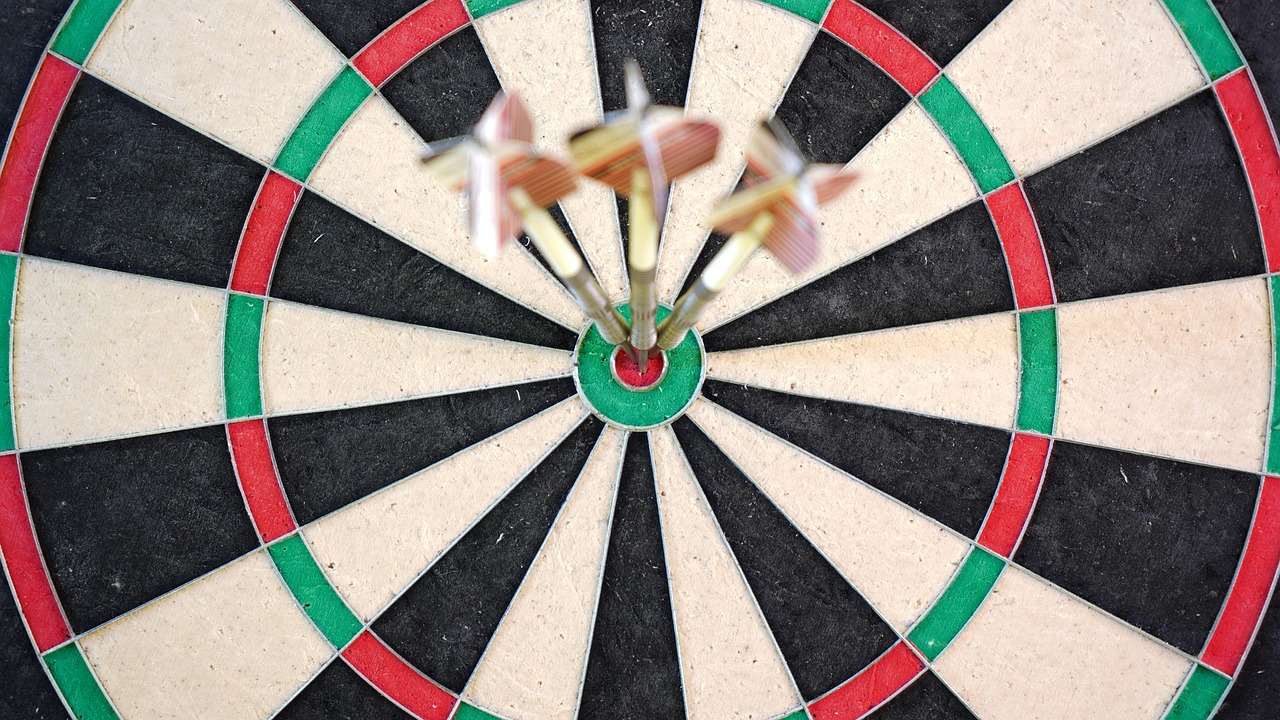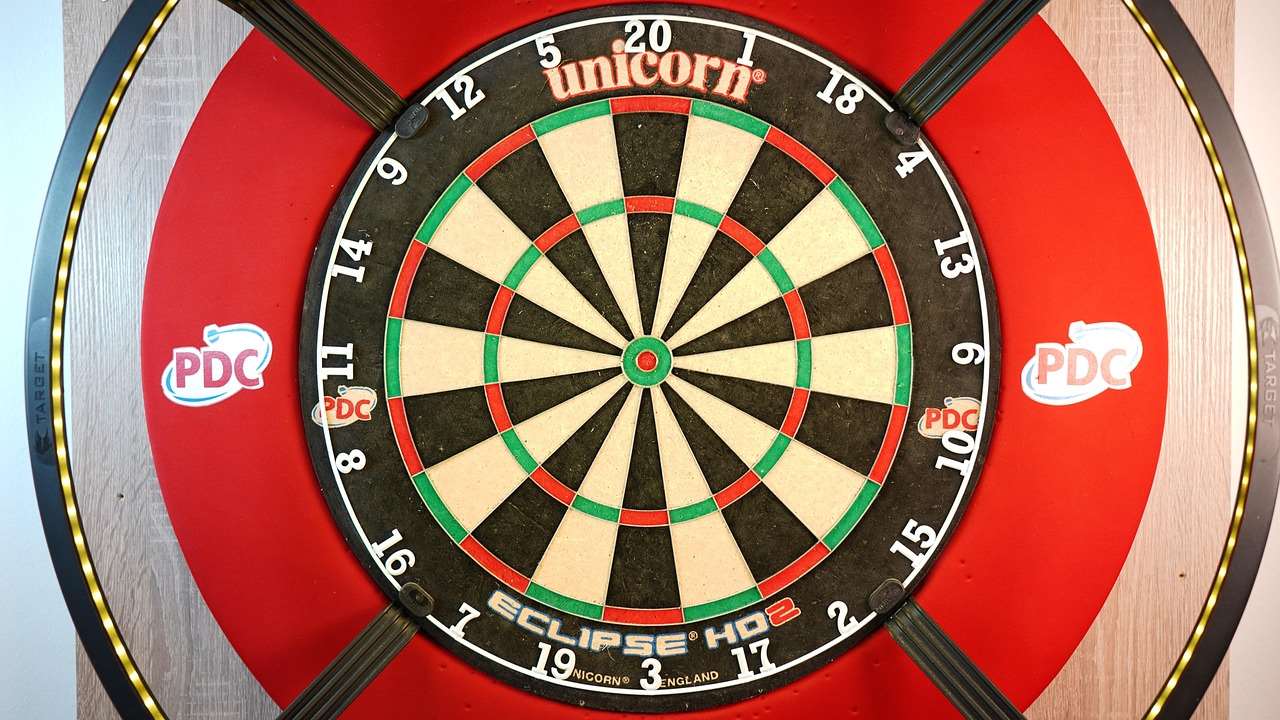Effectively managing your funds is paramount for long-term success in betting. **How to manage betting bankroll** boils down to implementing a structured strategy for allocating and tracking your money, preventing reckless decisions, and maximizing your potential profits. In this article, we’ll explore comprehensive strategies for bankroll management, covering everything from setting a budget to choosing the right staking method.
⚠️ Still Using Pen & Paper (or a Chalkboard)?! ⚠️
Step into the future! The Dart Counter App handles all the scoring, suggests checkouts, and tracks your stats automatically. It's easier than you think!
Try the Smart Dart Counter App FREE!Ready for an upgrade? Click above!
The Foundation: Setting Your Betting Bankroll
Before placing a single bet, you need to establish a dedicated betting bankroll. This is the total amount of money you’re willing to risk solely for betting purposes. Crucially, this should be money you can afford to lose without impacting your essential living expenses. Treating your bankroll like a business is the first step in learning **how to manage betting bankroll** effectively.
Determining Your Bankroll Size
The ideal size of your bankroll depends on several factors:
- Your income and expenses: How much disposable income do you have after covering necessities?
- Your risk tolerance: Are you comfortable with potentially losing a significant portion of your bankroll?
- Your betting style: Do you prefer smaller, more frequent bets or larger, riskier wagers?
A common recommendation is to start with a bankroll that’s at least 100 times your average stake. This provides a buffer against losing streaks and allows you to weather the inevitable ups and downs of betting. Remember, consistency and discipline are key.

Staking Methods: Maximizing Returns, Minimizing Risk
The staking method you choose is a crucial element of effective bankroll management. Different methods suit different betting styles and risk tolerances. Let’s examine some popular approaches:
Flat Staking
Flat staking involves betting the same amount on every wager, regardless of the odds or perceived value. This is a simple and conservative approach, ideal for beginners. For example, with a $1000 bankroll and a 1% flat stake, you’d bet $10 on every selection. This approach helps to prevent you from over betting, especially if you are new to the darts betting scene and need time to learn about Darts Betting And Fantasy Leagues Guide.
Percentage Staking
Percentage staking involves betting a fixed percentage of your remaining bankroll on each wager. This method is more dynamic than flat staking, as your stake adjusts based on your bankroll size. If your bankroll increases, your stakes increase proportionally. Conversely, if your bankroll decreases, your stakes decrease. This helps to protect your bankroll during losing streaks and capitalize on winning runs. A common starting point is 1-3% of your bankroll per bet.
Kelly Criterion
The Kelly Criterion is a more advanced staking method that aims to maximize long-term growth by betting a proportion of your bankroll based on the perceived edge you have over the market. It requires accurately assessing the probability of your bet winning and the odds offered by the bookmaker. While potentially more profitable, the Kelly Criterion can be risky if your probability assessments are inaccurate.
Martingale System (Avoid!)
The Martingale system involves doubling your stake after every loss, with the goal of recovering all previous losses and making a small profit with a single win. While it may seem appealing, the Martingale system is incredibly risky and can quickly deplete your bankroll. It’s generally advised to avoid this method entirely.
Tracking Your Bets: Analyzing Performance, Identifying Leaks
Keeping detailed records of your bets is essential for understanding your performance and identifying areas for improvement. This is a vital part of **how to manage betting bankroll** in the long run. A simple spreadsheet can be an incredibly powerful tool.
Key Information to Track
At a minimum, your betting spreadsheet should include the following information:
- Date of bet: When the bet was placed.
- Sport/Event: The specific sport and event you’re betting on.
- Selection: The team or player you’re betting on.
- Odds: The odds offered by the bookmaker.
- Stake: The amount of money you bet.
- Result: Whether the bet won or lost.
- Profit/Loss: The net profit or loss from the bet.
Analyzing Your Data
Once you have sufficient data, you can start analyzing your performance. Look for patterns and trends that can help you identify your strengths and weaknesses. Are you more profitable in certain sports or leagues? Are you consistently losing money on certain types of bets? By understanding your betting history, you can make more informed decisions and improve your overall profitability.

Psychological Considerations: Staying Disciplined, Avoiding Tilt
Betting is not just about mathematics and strategy; it’s also about managing your emotions. Tilt, a state of emotional frustration or anger caused by losing bets, can lead to impulsive and irrational decisions that can quickly destroy your bankroll. Learning **how to manage betting bankroll** also involves understanding and controlling your emotional responses.
Tips for Staying Disciplined
- Stick to your staking plan: Don’t deviate from your pre-determined staking method, even during winning or losing streaks.
- Set realistic goals: Don’t expect to get rich overnight. Focus on making consistent, incremental profits over the long term.
- Take breaks: If you’re feeling frustrated or stressed, take a break from betting to clear your head.
- Don’t chase losses: Trying to recoup losses by placing larger, riskier bets is a recipe for disaster.
- Recognize your biases: Be aware of your own biases and how they might influence your betting decisions. You might want to look into Player Statistics For Darts Betting to gain an edge.
Understanding Value Betting
**Value betting** is a strategy that involves identifying bets where the odds offered by the bookmaker are higher than your perceived probability of the event occurring. In other words, you’re betting on selections that you believe are undervalued by the market. Consistently finding and exploiting value bets is crucial for long-term profitability. You may want to review Using Player Stats For Darts Bets to identify value bets.
Calculating Expected Value
The expected value (EV) of a bet is a measure of its long-term profitability. It can be calculated using the following formula:
EV = (Probability of Winning x Potential Profit) – (Probability of Losing x Stake)
If the EV is positive, the bet is considered to be a value bet. However, it’s important to remember that EV is a long-term concept. Even with a positive EV, you can still experience losing streaks in the short term.
Adjusting Your Strategy: Adapting to Changing Circumstances
The betting landscape is constantly evolving. New information emerges, odds fluctuate, and your own skills and knowledge improve over time. Therefore, it’s essential to regularly review and adjust your betting strategy to adapt to changing circumstances. This is a critical aspect of **how to manage betting bankroll** successfully.
When to Re-evaluate
Consider re-evaluating your strategy in the following situations:
- Significant changes in your bankroll size: If your bankroll has increased or decreased significantly, you may need to adjust your staking method.
- Changes in your betting performance: If you’re consistently losing money, it’s time to re-evaluate your selections and strategies.
- Changes in the market: New information, such as player injuries or team form, can affect the odds and your perceived value. Consider if Recent Form Impact Darts Betting is a relevant consideration.
- Learning new information: As you gain more knowledge and experience, you may want to incorporate new strategies or refine your existing approach.
Responsible Gambling: Staying in Control
Responsible gambling is paramount. Betting should be a fun and entertaining activity, not a source of stress or financial hardship. It’s crucial to set limits, stay in control, and seek help if you feel like you’re developing a gambling problem. Remember, effective **how to manage betting bankroll** also means managing your behavior.
Signs of a Gambling Problem
- Betting more than you can afford to lose.
- Chasing losses.
- Lying to others about your betting activities.
- Feeling anxious or stressed about betting.
- Neglecting your responsibilities due to betting.
Resources for Help
If you think you might have a gambling problem, there are many resources available to help. Contact your local gambling helpline or visit the website of a responsible gambling organization.

Long-Term Vision: Consistency and Patience
Success in betting is a marathon, not a sprint. It requires consistency, patience, and a long-term vision. Don’t get discouraged by short-term losses. Focus on making informed decisions, sticking to your strategy, and continuously learning and improving. Remember that Head To Head Stats Darts Betting can play a part in decision making. By prioritizing long-term sustainability over quick wins, you’ll significantly increase your chances of success.
Building Sustainable Habits
- Continuously educate yourself: Stay informed about the sports you bet on and the latest betting strategies.
- Practice discipline: Stick to your staking plan and avoid impulsive decisions.
- Review and analyze your performance: Identify your strengths and weaknesses and make adjustments as needed.
- Stay positive: Maintain a positive attitude and don’t let losses discourage you.

Choosing the Right Bookmaker
Selecting the right bookmaker can significantly impact your profitability. Consider factors such as the odds offered, the range of markets available, the ease of use of the website or app, and the customer service provided. Compare odds from different bookmakers to ensure you’re getting the best possible value on your bets. Some bookmakers also offer valuable tools and resources, such as data analysis and betting tips, that can help you make more informed decisions.
Key Features to Look For
- Competitive Odds: Shop around for the best odds on your selections.
- Wide Range of Markets: Choose a bookmaker that offers a wide variety of betting options.
- User-Friendly Interface: Ensure the website or app is easy to navigate and use.
- Reliable Customer Service: Select a bookmaker with responsive and helpful customer support.
- Secure and Trustworthy: Choose a bookmaker that is licensed and regulated by a reputable authority.
Conclusion: Mastering Your Bankroll, Maximizing Your Potential
Learning **how to manage betting bankroll** is not just about limiting losses; it’s about empowering yourself to make smarter, more profitable decisions over the long term. By setting a budget, choosing an appropriate staking method, tracking your bets, managing your emotions, and continuously learning and adapting, you can significantly increase your chances of success. Remember, responsible gambling is paramount. Treat betting as a long-term investment, stay disciplined, and enjoy the process. Now that you’ve learned these crucial bankroll management strategies, put them into practice and start building a sustainable and profitable betting journey!
Hi, I’m Dieter, and I created Dartcounter (Dartcounterapp.com). My motivation wasn’t being a darts expert – quite the opposite! When I first started playing, I loved the game but found keeping accurate scores and tracking stats difficult and distracting.
I figured I couldn’t be the only one struggling with this. So, I decided to build a solution: an easy-to-use application that everyone, no matter their experience level, could use to manage scoring effortlessly.
My goal for Dartcounter was simple: let the app handle the numbers – the scoring, the averages, the stats, even checkout suggestions – so players could focus purely on their throw and enjoying the game. It began as a way to solve my own beginner’s problem, and I’m thrilled it has grown into a helpful tool for the wider darts community.